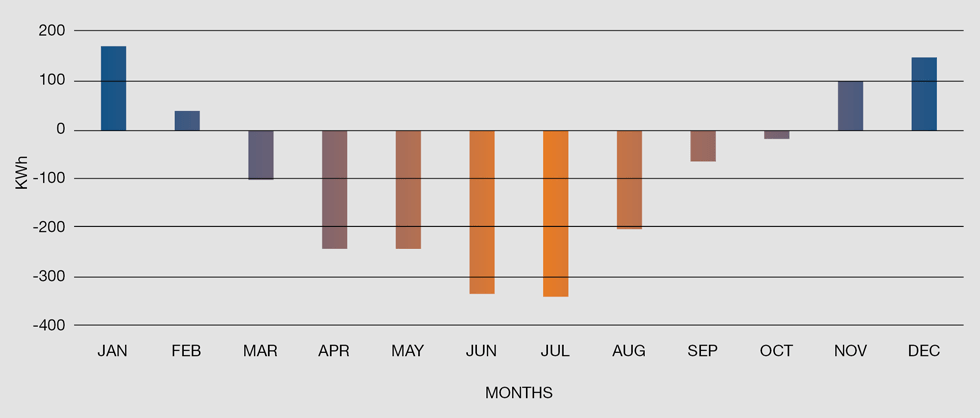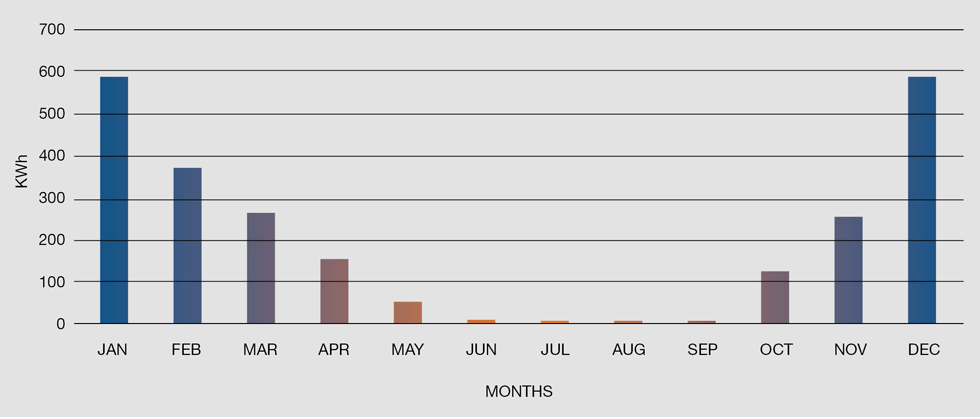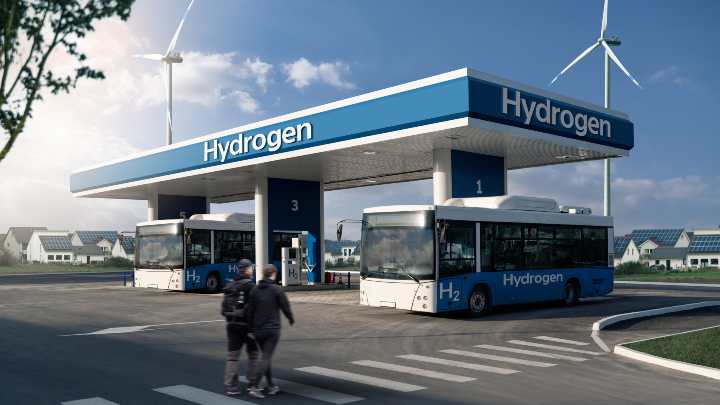Engineering Net Zero Part 3: Turning up the Heat for Consumers
David Simmonds argues that there is no one-size-fits-all energy efficient solution to heating our homes – not that consumers would necessarily want that anyway
UK GOVERNMENT plans for the decarbonisation of our buildings and, in particular their heating systems, are fragile and simplistic at best. Like transport, it is premised on a one-track solution, which for heating is through the deployment of heat pumps. These are strongly supported by the government’s climate watchdog, the Committee for Climate Change (CCC), but as mentioned in my earlier piece, “one size does not fit all”. Further, they have long-term implications for our utility grids, and here we should remember that today’s gas grid delivers four times the energy to our homes than our power grid.
Tom Baxter in his TCE article from August 2020 highlighted the need for reducing energy demand in buildings by focusing on efficiency through better insulation and ventilation, and it is good to see that a new energy efficiency taskforce is being established. Consistent with the government approach, Baxter also recommended the widespread deployment of heat pumps, and as engineers we can all agree that these offer a high level of efficiency, though, as Tony Isaac in another TCE feature noted, those efficiency improvements will only be fully realised once most of our power comes from renewable resources. In this feature I will consider alternatives and propose a range of solutions which could better fit both consumer needs and future energy system operation.
Challenges to heat pump development
While heat pumps offer the most energy efficient solution for home heating, their deployment faces a number of barriers. These were well covered in Justin Rowlatt’s feature for BBC One in which they visited a family in Hampshire installing a new heat pump system in their bungalow. However, to help readers appreciate some of the delivery risks, let me share some data (see Figures 1, 2 & 3) relating to my own home.
The Domestic Energy Challenge – Simmonds Household Energy Usage With New Technologies



This demonstrates how seasonal or lumpy energy demand needs to be considered in the design of our future energy supply system. Two important conclusions from my “local” assessment which could be repeated across millions of homes, are that:
- While there are significant efficiency gains from using a heat pump, operating costs will remain high. Today the UK has a four to one spark gap, the highest in Europe, which means that the price per kWh of electricity is four times that of its gas equivalent. This erodes the benefits accruing from the efficiency of a heat pump (typical coefficient of performance = 3)
- Winter to summer demand imbalances from heating will require seasonal energy storage, and/or some defined use of summer excess. In my case this is aggravated by the installation of solar panels, with their reverse seasonal performance. The analysis demonstrates that I only draw from the grid during the winter, using generation capacity, inefficiently, for only a few months of the year
A further hurdle is the modifications needed within a typical UK home to ensure heat pumps can operate satisfactorily throughout the year. The widespread application of heat pumps was covered in a Which? review and a recent webinar held by the Institution of Mechanical Engineers. They concluded that heat pumps need to be designed and installed properly, that they only work effectively in well-insulated homes, and today, even with government subsidies, they do not offer cost savings. Heat pump unit costs have dropped as a result of demand across Europe, but unit costs only represent a small part of the total cost. System installation costs are high, but these too should drop as deployment rates increase and installers gain experience, but not exponentially.
Today the costs of running and installing heat pumps provides another social inequality marker. To enforce take-up of heat pumps, the UK government is proposing the clean heat market mechanism, which will fine gas boiler companies if they don’t sell an adequate percentage of heat pumps.
Successful rollout of heat pumps will double today’s domestic power usage, particularly in winter, requiring grid expansions and additional generating capacity. The Energy Networks Strategic Framework includes some detail on future demand and installed capacities for a range of net zero scenarios which would ultimately require a six to eight times growth on today’s renewables. The challenges of expanding the power grid and supplies from renewables are also covered in the UK electricity networks commissioner Nick Winser’s recent report, Accelerating Electricity Transmission Network Deployment. It is also considered in McKinsey’s report on the challenges facing the EU with its energy transition. Their report highlights planning and permitting processes and the impact on the grid of wind energy generation in the north of Germany being transported to markets in the south of the country; the UK has similar issues.
Alternative solutions
Firstly, we must again, like transport, look at reducing demand. Where feasible, improving the insulation and energy efficiency of the UK’s old housing stock is key, and, in the long term, will save consumers money. The recent gas crisis has spurred the EU to look for savings and, despite the post-Covid revival, it reduced gas consumption in industry and buildings by 15-20% in 2022 when compared to 2021.
Today, we can also reduce demand by getting consumers to understand how their current gas boiler operates. Most properties have a condensing gas boiler, and while these can operate at 70+°C exit temperature, they should be limited to 50–60°C to maintain their official efficiency ratings. We are being sold “condensing” boilers, but often installers set them to operate at a high temperature, above their condensing range. Many householders believe their system works best at those higher temperatures, and this is a myth that must be broken. When operating at the lower temperatures, rooms may feel a little cooler, and that then is when one will start looking for improved insulation. This will further reduce demand, lower gas consumption, and reduce bills. The skills needed for the redesign of home insulation and heating systems to provide an effective solution will be addressed in a future feature.

Secondly, we should promote district heating systems that centralise heat generation, eliminating the need for consumers to significantly alter their homes. These have been deployed elsewhere in Europe, and are most appropriate in city settings, particularly flats. It is interesting to see that city councils, including Glasgow and Bristol, are promoting them as part of their progressive decarbonisation plans. District heating may also be appropriate for housing local to industrial clusters which have excess waste heat, though here some backup may be required. Chris Haines, in a TCE article, presented a heating development in his area using a communal heat pump, a good example of seeking synergies between technologies. District heating should be considered wherever possible, though it does need collective action, which in turn needs policy support. The Scottish government has signed a memorandum of understanding with Denmark, one of the world leaders in this field, to help establish best practice.
Thirdly, more efficient standalone direct electrical systems, such as Sunflow German radiators or modern storage radiators offer a possible solution for difficult to convert homes or premises. Once our power supplies are green, this too is a green solution but the running costs and demand on the grid are high. They should only be considered for off-mains gas grid, difficult to insulate properties, though these may also be served by niche liquid or gaseous biofuels.
Lastly, we should consider hydrogen boilers. Again, hydrogen is less efficient when compared to direct use of renewable power, but as a gaseous energy vector it is more flexible. It can be stored and burnt in hydrogen-ready gas boilers. Most likely it will be capable of being distributed through existing natural gas grids. They can be installed as direct replacements to a natural gas boiler, and they will alleviate the need to significantly modify a property.
Does hydrogen have a role to play in heating?
Hydrogen comes with some safety risks which need to be properly managed, and pipes within a building to the boiler may need changing out. However, we should remember that hydrogen was a key component of town gas, and comprehensive safety risk assessments are under way for both transmission and distribution grids, and for supplies within buildings. These are considering a range of blending, with up to 20% by volume hydrogen already fully tested. Further work is also being done with respect to metering of blended and unblended hydrogen for billing purposes. In Europe, consideration is being given to mixing hydrogen with bio-gas.
This leads to two further considerations: cost and the ability to deliver sufficient energy through the current gas grid. I will explore costs in a future feature, but the spark gap offers some room for managing costs. Production of blue hydrogen from natural gas will double energy cost, but that still means it will be cheaper than electricity used for direct heating.
Given its lower calorific value and density, we would not be able to transport the energy equivalent of gas delivered today, but, as mentioned, the gas grid supplies four times the energy to our homes than the electric grid, and with significant buffer, summer to winter. Following partial adoption of heat pumps, overall demand for gas for heating will reduce, so even with the lower density hydrogen, the existing gas network would still have the capacity to supply millions of homes who could not easily switch to an all-electric solution.
Rightly, government wanted to explore the hydrogen alternative, and proposed a trial in a hydrogen village. However, there is local resistance to these, with the Whitby option recently being cancelled, and government starting to back away from the use of hydrogen in heating.

This move is further confirmed by the single-track approach being considered in the Winser report. In essence, his report says that to meet net zero, better engagement with local communities to accept pylons and other electricity infrastructure is needed. I wholeheartedly agree that we need to improve community engagement, and that we will need a major expansion of our power grid. However, the scale of this expansion could be limited if we were to realise the opportunity to convert our gas grid to hydrogen, bringing an alternative or backup energy to consumers’ doorsteps. I include “backup” for there are those periods of renewables intermittency.
Perhaps the most challenging factor in this assessment is viability. The UK’s Energy Systems Hydrogen Catapult completed a recent review to establish the barriers to hydrogen, and their findings concluded with a range of soft issues (planning, regulation etc), which could equally apply to the future power grid expansions, rather than technological or physical constraints. However, two barriers to be addressed by our engineering community are the need to establish a set of common standards for hydrogen and ensuring we have a skilled workforce. We are not alone here, for many other countries are also addressing the same challenge; indeed members of our engineering community are collaborating across the EU. The government’s Powering up Britain: Energy Security Plan sets out a decision point in 2026, by when full viability or otherwise of grid conversion should be confirmed.
Consumer impact
So, coming back to today, we are witnessing consumer resistance to both heat pumps and hydrogen boilers, as well as grid network expansions. While consumers see the need for change, they generally want to maintain the status quo – cheap gas, a boiler they are familiar with, no changes to their property, and no unsightly infrastructure. Here in the UK, we have been beneficiaries of cheap gas for decades and weaning us off it, and its associated spark gap, is a real challenge. Unlike cars, mobile phones, or even our houses, heating systems are not glamorous or a status symbol. Indeed, for some the actual status symbol is “look how warm my house is”. Change is difficult to impose, so how can engineers and government help?
For many the real issue is cost, and as already mentioned, we need to reduce energy demand and running costs. Firstly, we should be doing more to advise consumers on how they can operate their current gas boilers more efficiently. Turning a single knob on that boiler will help.

Secondly, we should be looking at ways to help reduce heat loss from existing homes and other buildings. This should be through development of better, cheaper, and fire safe insulation materials, designing improved installation methods and the training of a workforce capable of delivering quality insulation projects. In turn, government should be reinstating subsidies or loans for building insulation, though I recognise that this has a political dimension, for many homeowners could afford to self-fund these improvements. However, these costs would be offset by reduced expenditure on generating capacity, grid infrastructure, and energy imports.
Thirdly, as gas prices return closer to earlier levels, the UK government needs to address that spark gap. Contrary to government’s stated goal to address relative pricing, the gap widened in July, reducing heat pump competitiveness. It can correct this by either progressively reducing electricity prices, or regressively increasing gas prices, or perhaps a combination of both. The current free market approach to retail energy pricing does not help, and this is something I will return to in a later feature. Once the spark gap is addressed, then the UK government will need to enhance its programme to support the capital costs of new heat pump installations, particularly for the fuel-poor, to ensure the targets desired by the CCC are met.
Beyond cost, the lifestyle changes needed for net zero are being questioned. In the case of heating these can be “out of pocket” expenses, modifications to property, lowered heating levels, or blights on the local landscape from new infrastructure. Even the installation of a heat pump on a garden patio is seen as a lifestyle change by some. Our engineering community should be looking at how we can reduce the impact of the new technology through, for instance, improved refrigerants, increasing unit reliabilities, reducing unit sizes and noise levels, and looking for simpler installation methods.
A small aside to heating, is cooking. Interestingly, the UK government has not talked of mandating any deadline for gas cookers or hobs. However, this is an area where change is already happening as homeowners upgrade to more efficient and cleaner induction hobs.
Combining technologies for net zero – hybrid heat pumps
In my feature on transport, I recommended a hybrid solution, and I suggest a similar approach is taken for heating, drawing upon the favourable features of both heat pump and hydrogen boiler technologies. Earlier versions of the CCC’s domestic heating strategy considered hybrid heat pumps; heat pumps with a backup boiler, and, in natural gas form, they are already available. While these may result in higher equipment costs, they could significantly reduce overall installation costs, as they avoid the need for major modifications to buildings and their current heat distribution systems. And, once the grid is converted, they can run on hydrogen. They can reduce operating costs for some, as consumers can turn off the heat pump while away and more rapidly heat up their homes with the boiler upon return. The main heating mode would be the efficient heat pump, with the boiler providing flexibility as a boost or backup.
Regretably, UK government briefings on heat pumps do not address hybrid versions, but a 2017 study for the then Department for Business, Energy and Industrial Strategy, looked at hybrid heat pumps operating in various domestic settings. It concluded that the efficient heat pump of the hybrid configuration would provide anywhere from a 30%–96% share of a home’s heat, but more typically in the range of 50%–80%. As with a hybrid car, a hybrid heat pump puts the consumer in control, helping them to manage their lumpy demand. A combination hybrid unit, with smart controls, would firstly reduce overall peak power demand on the electricity grid, and secondly reduce the energy required to be delivered through the gas grid, making conversion and use for hydrogen more viable. In terms of operating costs, these would be low when operating in the efficient heat pump mode, but could benefit from the hydrogen boiler mode if they do not want to heat their house 24/7. Further smart controls can be designed to optimise operating costs against actual grid demand.
Engineers do not often deal in stereotypes, but, when you are talking about consumer acceptance, they may help. Historian Derek Taylor in his book, Who Do The English Think They Are?, concludes that one of the strengths of the English, and indeed the British as a whole, is their appreciation for flexibility. Indeed, hybrid working has become one of our new phrases. On the other hand, the German stereotype is one of efficiency, so it is interesting to note that Germany is actively considering a flexible hybrid energy economy with a target to convert its gas grid by 2035. Further, they are allowing the installation of hybrid heat pumps, ready for hydrogen, in new homes. Neighbouring Netherlands are also considering hydrogen, with the village of Stad aan ’t Haringvliet recently voting in favour of conversion to hydrogen.
I have already highlighted the need for peak-time power generation and policymakers are starting to realise that at some stage in the future they may need to convert gas-fired power stations to hydrogen service, especially during periods of renewables intermittency. These would utilise stored hydrogen, produced at times of peak energy, and operate at +/-40% efficiency, negating much of the efficiency gain of a heat pump. Meanwhile, the hydrogen boilers within a hybrid heat system, operating at +/-90% efficiency during these periods, would reduce the need for peak-time power generation capacity – remember my own call on grid power during those winter months.
Giving consumers choice

Like transport, forcing a single solution down consumers’ throats will not pay off. As with their cars, many consumers will want to continue with their current boilers for as long as possible, while others will embrace change. Government need to steer this change through policy and a restructuring of the energy retail market.
I have detailed the case for two key considerations. Firstly, the need to assess the economics and viability of all-electric, and dual (electric/hydrogen), domestic energy scenarios. Secondly, I have identified a technology which combines the benefits of both heat pump and boiler, which, in turn, can better optimise the dual scenario and, consequently, the eventual fate of the gas grid.
The dual scenario can embrace a range of technologies from district heating, heat pumps, including the efficient but more expensive ground source heat pump, through hybrid heat pumps (including adding a heat pump to a current boiler system), to hydrogen boilers. Ultimately price, running costs, and flexibility will determine consumer choice, but providing consumers and suppliers with these options will increase their acceptance of our net zero future.
To realise this, some short-term actions already in hand or that need addressing include:
- engineers developing the case for hybrid technologies and providing data for government to fully develop and compare the two alternative domestic energy futures
- government urgently addressing the spark gap to provide a more realistic differential, and one which reflects average electricity production costs rather than balancing point pricing. Resolution will promote a faster take-up of heat pumps (and electric vehicles), even in their hybrid form
- gas grid operators urgently completing their safety and other assessments
- power grid operators implementing the findings of the Winser report to secure public support for the first phases of grid expansion
- government following CCC’s recommended mandate that, post 2025, new gas boilers should be sold “hydrogen ready”
- when promoting its hydrogen village, government should also offer residents options for a heat pump installation. Further, I see no reason why they could not already offer a hybrid heat pump, so that all technologies are test-run
- local authorities collaborating further on their experiences, rolling out district heating wherever feasible – these too could be powered by hybrid technologies
- manufacturers of hybrid heat pumps looking at how they can improve their smart control systems, so that consumers can optimise use based on variable charging rates and environmental conditions
We have still time to take decisions over our heating future, but engineers need to collectively inform policymakers. In particular, I hope I have demonstrated, in both this and the prior feature that engineers advocating a particular technology must collaborate to provide consumers with choice. Together with the UK government, we can provide a robust plan, one which espouses savings, efficiency, and flexibility, while still managing the future uncertainty on net zero. We must be more open and consider the range of technologies; there may be a showstopper, but we will be failing if we don’t properly consider more options.
The scale of power grid expansion and gas grid conversion to meet our future energy security will make them two of the largest projects this country has seen, ones which our engineering community should be proud to lead. I will leave readers with one final question to ponder – if the gas grid is not converted to hydrogen, when and how will government eventually turn off the fossil fuel tap?
Recent Editions
Catch up on the latest news, views and jobs from The Chemical Engineer. Below are the four latest issues. View a wider selection of the archive from within the Magazine section of this site.




